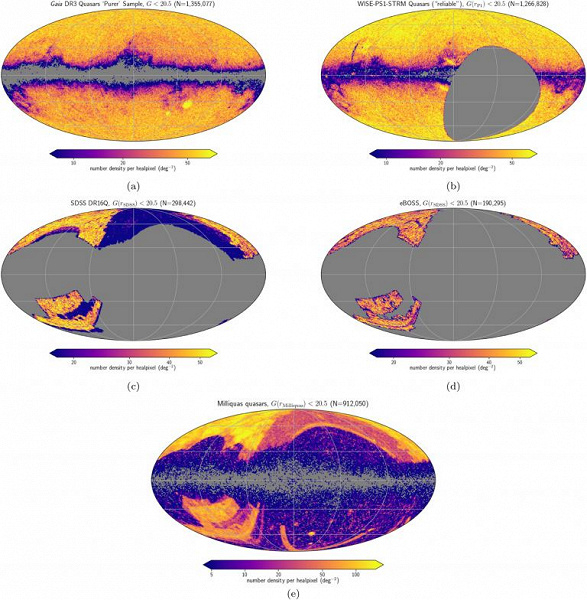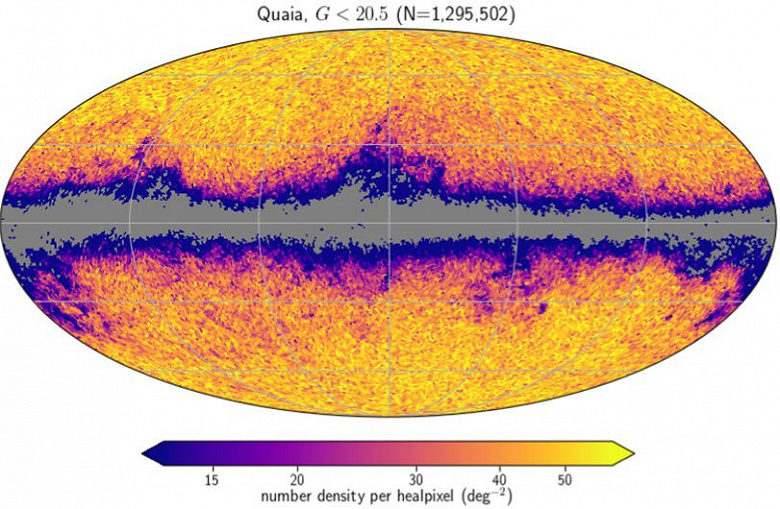And also understand the relationship between quasars, dark matter and supermassive black holes
Quasars – the brightest objects in the Universe. The most powerful of them are thousands of times brighter than galaxies. They represent the visible part of a supermassive black hole located at the center of the galaxy. The intense light comes from gas attracted to the black hole, which, when heated, emits at different wavelengths. However, quasars – not just bright ancient objects. They may provide information about dark matter.
When a supermassive black hole is actively feeding, it is called an Active Galactic Nucleus (AGN). The gas that black holes attract to themselves does not all escape beyond the event horizon. Most of the gas forms a rotating accretion disk around the black hole. As the material in the disk rotates, it heats up and, when heated, emits electromagnetic radiation of varying lengths, as well as jets.
When astronomers first discovered this light, they only knew that they were seeing objects emitting radio waves. The term «quasar» originally meant «quasi-stellar radio source». But over time, astronomers learned more and the term “active galactic nucleus” was adopted. However, the term «quasar» is still in use, but now indicates the AGN subclass, which is the most colorful of all. Quasars are located in galaxies surrounded by vast halos of dark matter. Astronomers suggest there is a connection between dark matter halos and quasars. The halo can pull even more matter towards the center of the galaxy, feeding supermassive black holes and «igniting» quasars, as well as contributing to the formation of more massive galaxies.
A team of researchers has developed a new quasar catalog that will provide a powerful tool for studying quasars, dark matter and supermassive black holes. The main goal of the new catalog — provide a tool for astrophysicists to understand the relationships between these objects.
This quasar catalog is different from previous ones because it provides a three-dimensional map of the largest volume of the Universe in history. It is not the most extensive in terms of the number of quasars or the most accurate in terms of quasar measurements, but it has the largest total volume on the map of the Universe, — notes David Hogg, co-author of the map, an astrophysicist from New York.
The catalog was named Quaia, as data for it were obtained from the Gaia space telescope. Gaia's mission is to map about a billion objects in the Milky Way, mostly stars. During its mission, Gaia obtained data on many quasars located outside the Milky Way, which served as the basis for the name Quaia.
«We were able to measure how matter accumulated in the early Universe with the same precision as some large international research projects»,— says Kate Storey-Fisher, lead author and researcher at the Donostia International Physics Center in Spain.
Studying the distribution of quasars may help explain the distribution of dark matter, which tends to accumulate in halos around galaxies. On large scales of the Universe, dark matter is organized in the form of a “web”, and the catalog of quasars helps to map this “web”.

In addition, the Quaia catalog is important for studying the Cosmic Microwave Background (CWB), which provides compelling evidence of the Big Bang. A web of dark matter bends the CWB's light as it travels to telescopes. Scientists can compare the distribution of quasars with CWB data and reveal the relationship between dark matter and quasars, as well as learn how matter accumulates in the Universe.
Quasars help monitor the «cosmic web», their distribution provides information that is not available from other sources. For example, tracking the distribution of matter at higher redshifts than is possible with a galaxy map. In addition, the Quaia catalog avoids the data pollution problem encountered by other quasar studies, such as the Sloan Digital Sky Survey (SDSS).
Although Quaia — not the first quasar map, it is more complete than the DR16Q SDSS — SDSS quasar catalog accompanying data release 16. The data contained in Quaia is already being used by other researchers.

